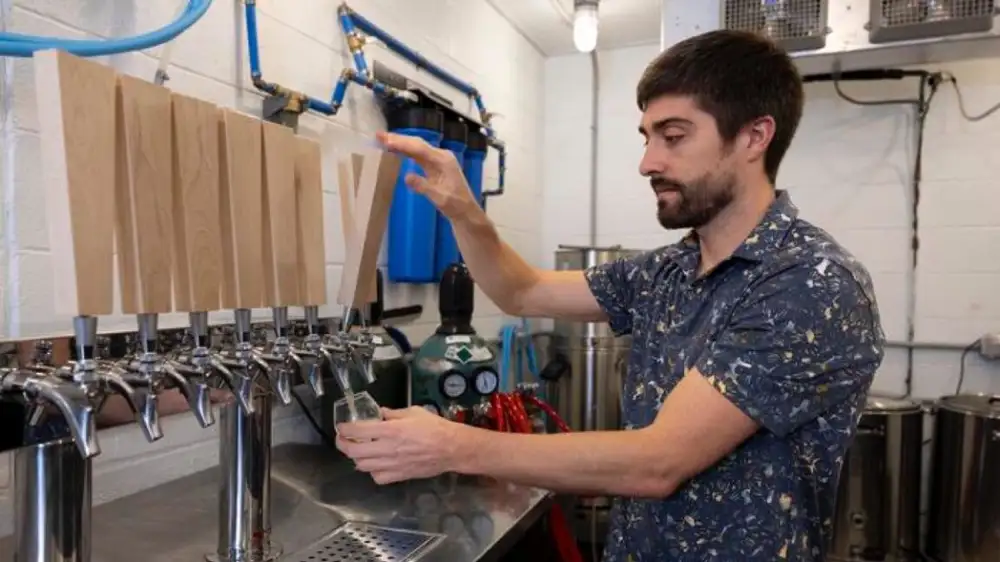There is increasing consumer demand for low- or non-alcoholic beers, and science is helping improve both the brewing process and the flavor profiles of the final product. One promising approach to better non-alcoholic beer involves substituting barley malt with milled rice, according to two recent papers—one published in the International Journal of Food Properties and the other published in the Journal of the American Society of Brewing Chemists.
The chemistry of brewing beer is a very active area of research. For instance, earlier this year, we reported on Norwegian scientists who discovered that sour beers made with the sugars found in peas, beans, and lentils had similar flavor profiles to your average Belgian-style sour beer, yet the brewing process was shorter, with simpler steps. The pea-sugar beers had more lactic acid, ethanol, and flavor compounds than those brewed without them, and they were rated as having fruitier flavors and higher acidity. And sensory panelists detected no trace of undesirable "bean-y" flavors that have limited the use of pea-based ingredients in the past.
But replacing barley malt with rice still might strike some beer aficionados as sacrilege. In Germany, "purity laws" dictate that any beverage classified as a beer—including non-alcoholic beers—must only be made from malted barley, hops, water, and yeast. This produces non-alcoholic beers that have more "worty" flavors (due to higher levels of aldehyde) than might ideally be desired. But not every country is as stringent as Germany. The US is much more flexible when it comes to selecting raw materials, including rice, for brewing beers. In fact, Arkansas just passed a bill this spring creating incentives for using rice (grown in Arkansas, of course) in the production of sake and beer.
“Rice isn’t just neutral filler. It’s a tool for innovation,” said co-author Scott Lafontaine, a food chemist at the University of Arkansas System Division of Agriculture. “It’s time we move beyond outdated perceptions and recognize what rice can offer in creating beer that’s sessionable [under 5 percent alcohol], efficient, and aligned with both tradition and the evolving preferences of today’s consumer.”
Rice, rice, baby
But all rice varietals are not created equal when it comes to brewing beer. Many cultivars currently favored for food applications were chosen for their higher head rice yields and lower glycemic properties; the latter requires rice with higher amylose content and higher gelatinization temperatures—the exact opposite of what's needed for beer. "Without international sourcing and closer collaboration with rice breeders, brewers risk losing access to cultivars best suited for brewing performance," said Lafontaine.
He and his team—including Christian Schubert, a visiting postdoc from the Research Institute for Raw Materials and Beverage Analysis in Berlin—brewed their own non-alcoholic beers, ranging from those made with 100 percent barley malt to ones made with 100 percent rice. They conducted a volatile chemical analysis to identify specific compounds present in the beers and assembled two sensory panels of tasters (one in the US, one in Europe) to assess aromas, flavors, and mouthfeel.
The panelists determined the rice-brewed beers had less worty flavors, and the chemical analysis revealed why: lower levels of aldehyde compounds. Instead, other sensory attributes emerged, most notably vanilla or buttery notes. "If a brewer wanted a more neutral character, they could use nonaromatic rice," the authors wrote. Along with brewing beers with 50 percent barley/50 percent rice, this would produce non-alcoholic beers likely to appeal more broadly to consumers.
The panelists also noted that higher rice content resulted in beers with a fatty/creamy mouthfeel—likely because higher rice content was correlated with increased levels of larger alcohol molecules, which are known to contribute to a pleasant mouthfeel. But it didn't raise the alcohol content above the legal threshold for a nonalcoholic beer.
There were cultural preferences, however. The US panelists didn't mind worty flavors as much as the European tasters did, which might explain why the former chose beers brewed with 70 percent barley/30 percent rice as the optimal mix. Their European counterparts preferred the opposite ratio (30 percent barley/70 percent rice). The explanation "may lie in the sensory expectations shaped by each region's brewing traditions," the authors wrote. Fermentation also occurred more quickly as the rice content increased because of higher levels of glucose and fructose.
The second study focused on testing 74 different rice cultivars to determine their extract yields, an important variable when it comes to an efficient brewing process, since higher yields mean brewers can use less grain, thereby cutting costs. This revealed that cultivars with lower amylose content cracked more easily to release sugars during the mashing process, producing the highest yields. And certain varieties also had lower gelatinization temperatures for greater ease of processing.
International Journal of Food Science, 2025. DOI: 10.1080/10942912.2025.2520907 (About DOIs)
Journal of the American Society of Brewing Chemists, 2025. DOI: 10.1080/03610470.2025.2499768

